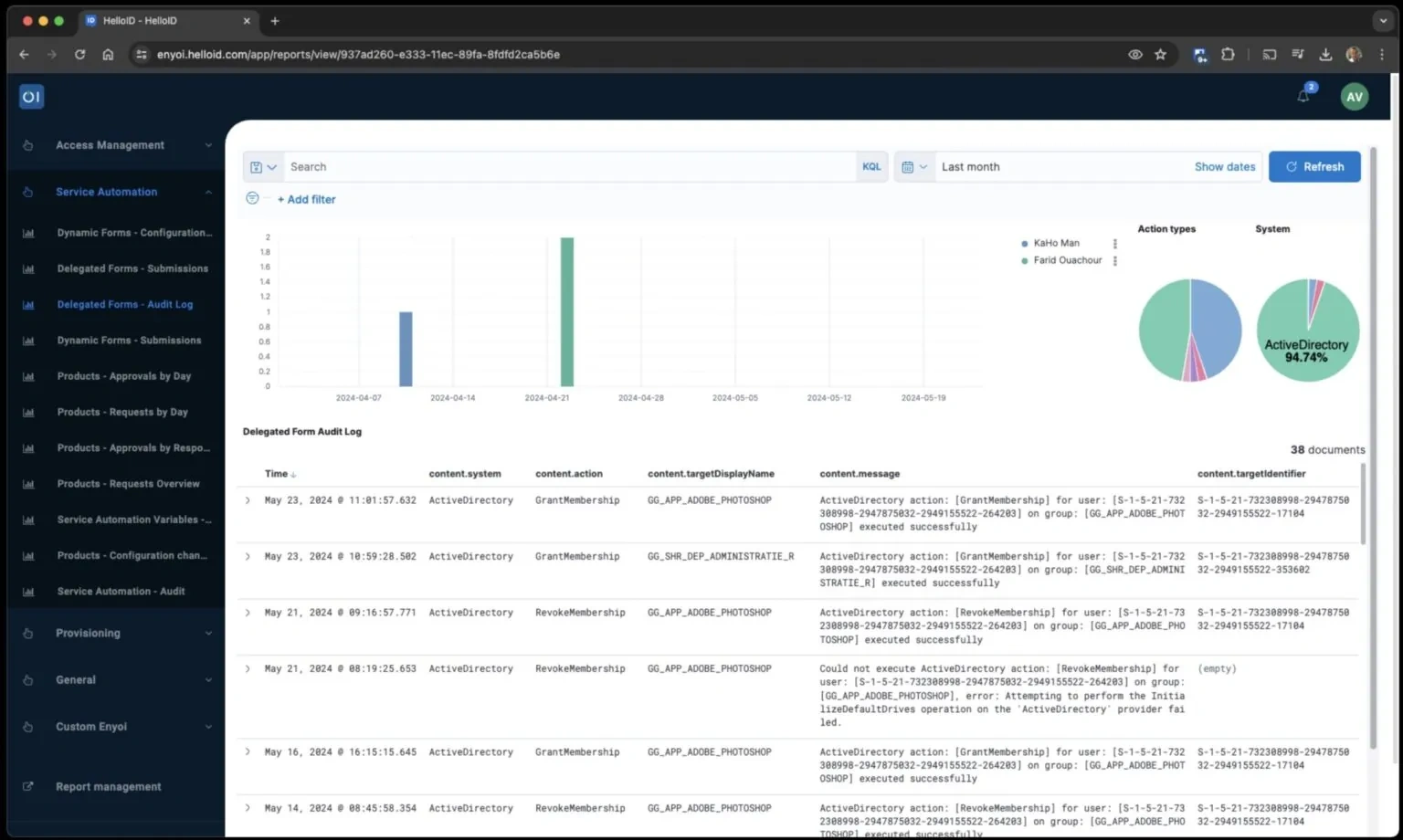
Audit
What is an audit?
An audit is a systematic examination of processes, systems, and the data they process within an organisation. The purpose of such an audit is to verify compliance with predefined rules, laws, and standards.
There are various types of audits, each typically focusing on a specific aspect of business operations. For example, there are financial audits, but audits can also be conducted on information security or project management. We will elaborate on this in the article.
Types of audits
'What is an audit?' is often too broad a question. When considering audits, it's useful to distinguish between the targeted business processes. We provide some examples later in the article. However, a distinction can also be made between so-called internal and external audits:
Internal audits are conducted by in-house specialists with the aim of providing the organisation insights into the quality of processes and systems and identifying necessary improvements.
External audits, on the other hand, are carried out by a completely independent and qualified external auditor. This lends the audit results more authority and makes them useful for purposes such as certification processes or as evidence that the organisation complies with laws and regulations.
Audit report
A key component of any audit is the audit report. This document offers a clear and structured summary of the evaluated areas, the findings identified, and the improvements suggested. Often, audit reports are revisited in follow-up steps to check whether and how the advice and improvements have been implemented.
What is a Chief Audit Executive?
In organisations where audits are a critical component, professional audit processes and auditors are essential, typically overseen by a Chief Audit Executive or audit manager. The Chief Audit Executive is responsible for all audit and management control activities within the organisation. The role is especially crucial in entities that are subject to significant public or financial scrutiny, such as government bodies, payment processing companies, or publicly traded multinationals. Additionally, large healthcare providers, educational institutions, and non-profit organisations often appoint a Chief Audit Executive.
What is the importance of an audit?
Audits are crucial for several reasons. Here are a few examples:
An audit can serve as proof that you comply with the relevant laws and regulations, or with industry-specific and internal guidelines. This is growing increasingly important for businesses and organisations.
Audits enable you to verify the accuracy of your organisation's data. While this often includes financial information crucial for investors, it also extends to production statistics, quality data, and more.
Audits are instrumental in identifying risks and enhancing your risk management strategies. Many management systems today are driven by thorough risk assessments, focusing primarily on key risks.
Furthermore, audits provide profound insights into the organisation, its operations, and its processes. Often, an audit report is a catalyst for initiating improvement projects.
Targeted audits are essential tools for detecting or preventing fraud. By analysing and comparing various financial reports, auditors can spot unusual patterns.
In summary, audits independently assess your integrity, effectiveness, efficiency, and compliance.
What aspects can you audit?
Typically, an audit focuses on a specific aspect of your business operations, such as finances, quality, or information security. Consequently, there are various types of audits:
Financial audits assess the reliability of financial applications and information, such as balance sheet data, profit and loss statements, and financial reports.
Operational audits focus on the efficiency and effectiveness of primary business processes, such as production processes or the logistics chain.
IT audits examine the security, reliability, and efficiency of IT systems and processes.
Compliance audits determine whether an organisation complies with all applicable laws, guidelines, and internally established policies.
Quality audits are conducted to evaluate and improve quality processes.
Environmental audits review environmental practices and check compliance with relevant environmental laws and sustainability regulations.
Social audits focus on the social responsibilities of organisations, covering topics such as working conditions, human rights, and integrity.
Tools4ever is particularly involved in IT audits and compliance audits. Many IT environments must adhere to information security standards such as ISO 27001, NEN 7510, or the BIO. A key requirement in ISO audits and security audits is the effective management of user access. It's typically mandatory for each user to have access only to the applications and data necessary for their specific roles, a concept known as 'Least Privilege'. A modern IAM platform like HelloID is essential in this context because it automatically assigns the correct rights to everyone and keeps these rights visible at all times.
How does an audit work?
The composition of such an audit plan varies depending on the type of audit, but generally, it always involves the following steps:
Audit Preparation: You begin by defining clear objectives and either establishing an audit team or selecting an auditor. A schedule should be created, and all necessary documents and data should be gathered. It must be clear which standards or guidelines are to be applied, and sometimes a standard audit checklist is used.
Risk Assessment: Identify the principal risks and key focus areas. This information helps determine the audit's primary focus, allowing for the refinement of the audit plan.
Conducting the Audit: Depending on the audit type, this might involve conducting interviews, analysing documents and process descriptions, observing operations, and performing spot checks.
Audit Reporting: The findings are compiled into a report that documents strengths, areas for improvement, conclusions, and recommendations.
Follow-up: In this phase, the report is reviewed with management. Additionally, A plan must also be formulated to address the recommendations. This includes scheduling the review and implementation of the proposed improvements.

How do you prepare for an audit?
How can you prepare for an audit if you are responsible for IAM functionality and processes? As we previously outlined, many IT and security standards today set clear requirements for Identity and Access Management. An IAM platform like HelloID must not only meet these requirements, but you must also be able to demonstrate compliance at any moment. Additionally, in the event of a data breach or other security incident, a complete audit trail must be available.
HelloID therefore logs not only all adjustments to business rules but also every individual access request made by users and managers within the IAM platform. This includes details of who submitted the request, who reviewed and approved it, and who performed the activation. Access attempts to the IT environment are also automatically logged. The HelloID audit functionality ensures you have all the necessary information for security evaluations and audits at your fingertips.
Related Articles
- Service Automation – Auditing
- Service Automation – Testing and Logging
- Smart RBAC: Prevent role explosion
- On-premise vs cloud
- Developing a strong IAM strategy
- Logging & Troubleshooting
- What is a good sequence for an IAM implementation?
- Selecting the right IAM solution
- How to write a business case for IAM
- Configuration of a Built-in AD Connector